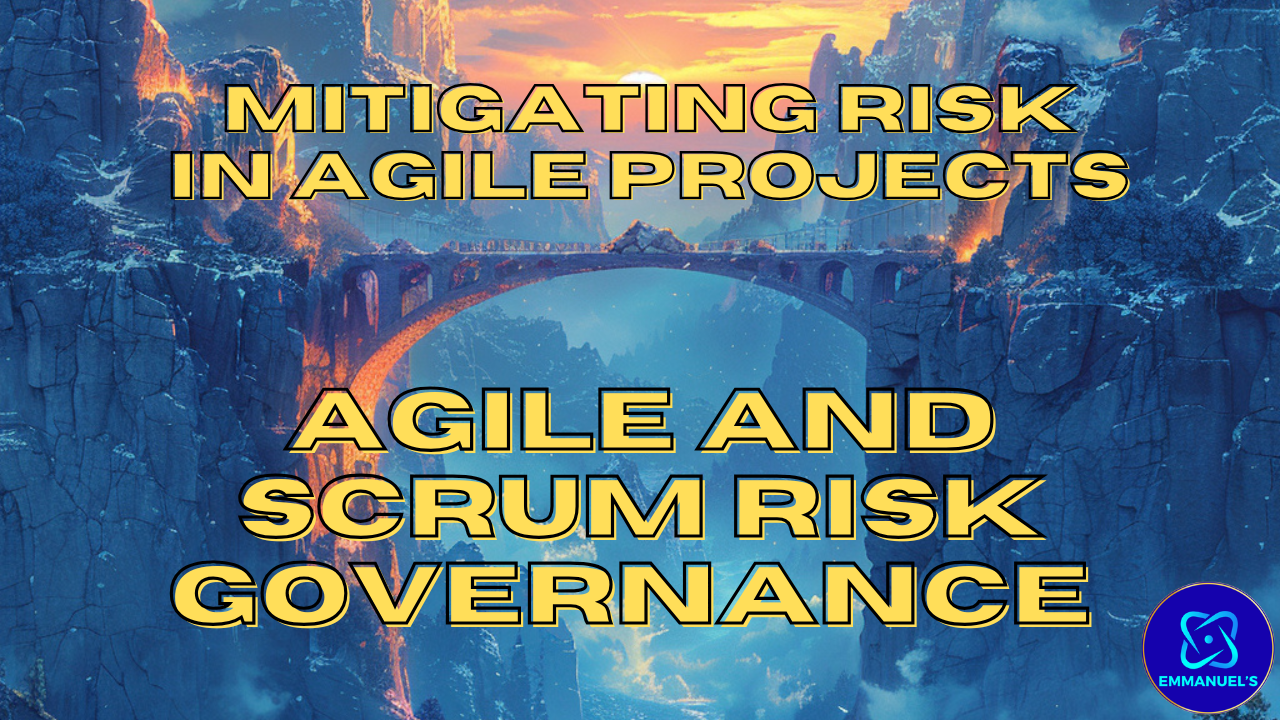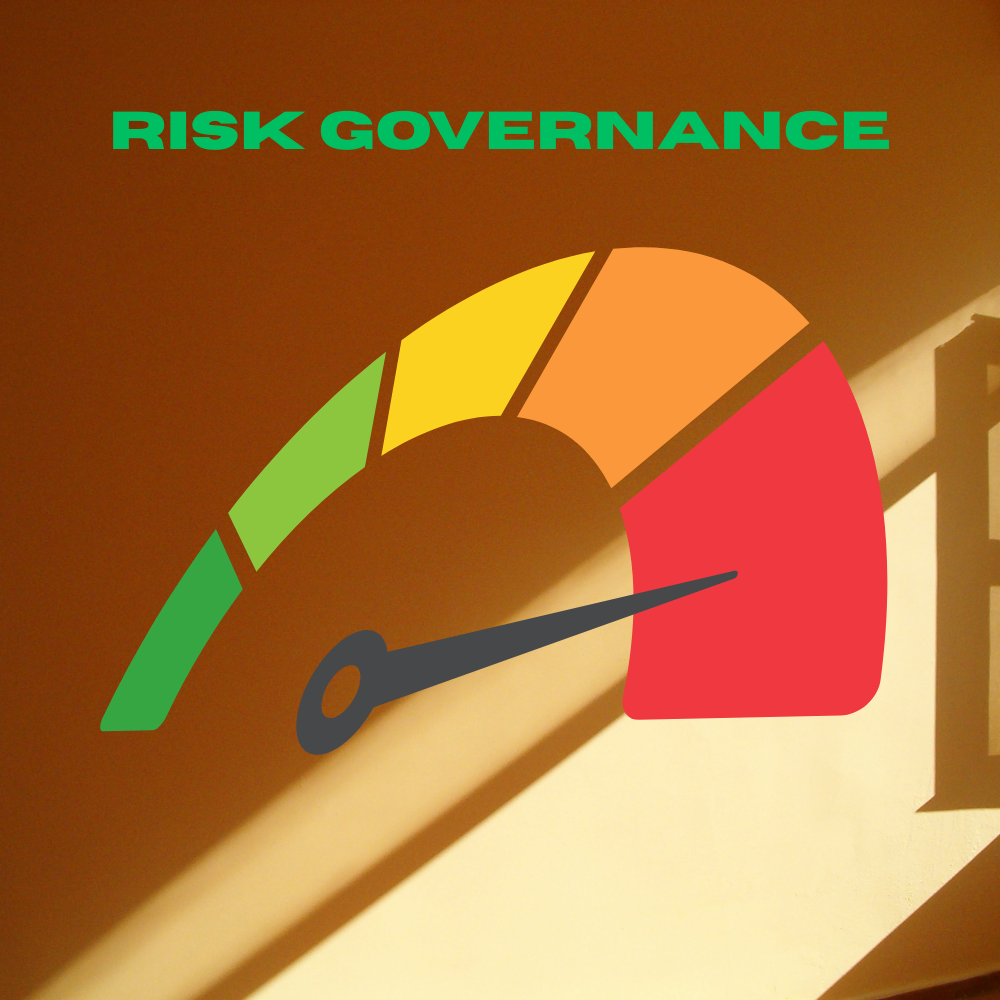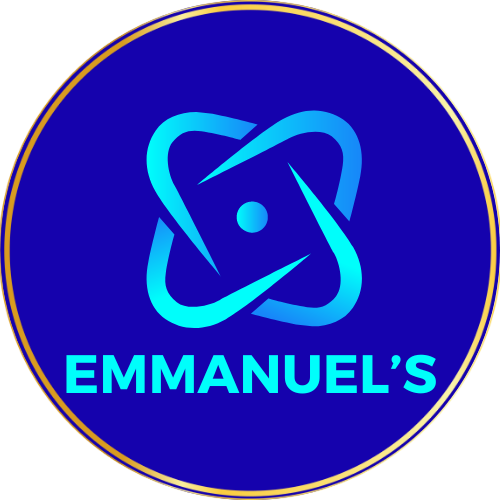Agile Risk Governance: Mitigating Risk in Agile Projects
In the Agile landscape, risk is a catalyst for evolution. Embrace the Agile and Scrum Risk Governance to transform uncertainties into opportunities, ensuring your projects thrive in the face of change. Navigate challenges with confidence—turn risks into rewards!

How do teams navigate the uncertain waters of project development while staying true to Agile principles? In an era where rapid change is the norm, traditional risk management strategies often seem inadequate.
Enter Agile Risk Governance—a transformative approach that seamlessly integrates risk assessment into every iteration. It enables teams to identify, assess, and respond to risks in real time.
By fostering a culture of adaptability and proactive problem-solving, this methodology enhances resilience and also turns potential pitfalls into opportunities for growth. Join us as we delve into the world of Agile Risk Governance and discover how it redefines success in an unpredictable landscape.
Risk Governance In Agile: Efficient Product Delivery
In the complex landscape of project management, Agile methodologies have emerged as a cornerstone for successful product development, enabling teams to respond swiftly to changing market demands. However, with the acceleration of delivery comes an inherent need for effective risk management.
Agile risk management is not merely an afterthought; it is a vital, continuous component integrated throughout the project lifecycle. By identifying, assessing, and mitigating risks iteratively, organizations enhance their ability to deliver high-quality products on time and within goals, ensuring efficient product delivery even in uncertain environments.
Here, we explore how a proactive approach to risk transforms potential challenges into opportunities for innovation and growth in Agile frameworks.
Why Scrum? Unlock Project Success and Efficient Product Delivery
Are you a CEO, stakeholder, project manager, or decision-maker frustrated with persistent project cost overruns, missed deadlines, and recurring product quality issues?
Do budget constraints and time management challenges constantly plague your projects in the dynamic world of startups and SMEs? You’re not alone.
Many organizations struggle with these common pain points, which are often exacerbated by unmanaged risk, impacting Team confidence, communication breakdowns, and inefficient processes that hinder innovation and operational effectiveness.
What if there was a better way? A proven path to achieve maximum impact with minimal waste, by systematically managing risk?
Enter Scrum, a practical Agile framework designed to transform project inefficiencies into predictable product delivery.
More than just a methodology, Scrum provides a structured yet flexible approach that entrusts teams to deliver incremental value frequently and predictably, regardless of what they’re building—whether it’s software, a new marketing campaign, streamlined internal processes, or even a physical product.
The Agile Advantage: Scrum Transforms Your Project Challenges
Traditional project management often struggles to keep pace with innovation, leading to a cascade of problems and unaddressed risks.
Scrum offers an assertive solution by embracing agility and collaboration. Here’s how it inherently supports effective risk governance in Agile projects:
- Governance and Predictability: Scrum’s iterative approach and focus on continuous improvement assist you in staying on track and avoiding unplanned, costly overruns. It significantly reduces financial and timeline risks by accomplishing progress transparently and predictably.
- Deliver High-Quality Products: Scrum emphasizes continuous feedback and integrated quality assurance (“Definition of Done”). It sets the standard for quality early, mitigating the risk of expensive defects later and safeguarding your reputation.
- Team Confidence and Productivity: Scrum entrusts teams to self-organize, take ownership, and collaborate effectively. These lead to increased engagement, confidence, and a thriving, efficient workforce, which are crucial for proactive risk identification and problem-solving.
- Improve Communication and Transparency: Scrum fosters open dialogue through regular events, reducing misunderstandings and promoting a collaborative work environment where everyone is aligned. This transparency is crucial for identifying early risks and implementing effective collective risk management.
- Adapt Timely and Effectively: Scrum’s inherent flexibility allows you to respond efficiently to innovation, creativity, changing requirements, and shifting market conditions with ease. This adaptability is critical for mitigating emergent risks and ensuring your projects remain relevant and impactful.
Why Leaders Choose Scrum: Benefits for Every Role
Scrum’s clarity and efficiency benefit every key role in your organization, especially in managing risk:
- For Stakeholders: See tangible progress and provide feedback early and often through regular Sprint Reviews. It ensures the product continuously meets your evolving needs and aligns with strategic goals, enhancing overall project visibility and reducing delivery risks.
- For Product Owners: Gain a clear framework for effectively managing the Product Backlog and maximizing the value delivered to customers. You have the tools to prioritize confidently, balancing value against risk.
- For Project Managers: Transition from a command-and-control role to a guiding, facilitating, and leadership role. Benefit from increased transparency, efficient collaboration, and proactive risk management, entrusting your teams to achieve peak performance.
- For CEOs: Deliver innovation and achieve a competitive edge while fostering a culture of agility, customer-centricity, and continuous improvement across the organization. Scrum provides a framework for staying informed and making strategic decisions based on real-time progress and identified risks.

Agile Risk Governance Process
In an Agile project environment, the Team employs an Agile risk management approach that emphasizes continuous risk assessment throughout the development process.
This methodology focuses on identifying and analyzing risks to continuously uncover potential obstacles to effective risk governance.
- Continuous Risk Assessment: Unlike traditional methods that front-load risk planning, Agile risk management is a dynamic approach to risk assessment. Teams continuously identify new risks and re-evaluate existing ones in each Sprint, fostering a proactive approach.
- Risk Register and Review: A key aspect is the creation of a risk register (Backlog), which serves as a living document to track identified risks and their corresponding responses. Regular risk reviews in Agile project meetings (like Sprint Reviews and Retrospectives) allow Agile practitioners to monitor risk exposure and adapt their risk management practices as new risks arise.
- Transparency and Collaboration: By categorizing risks and utilizing information features such as Product and Sprint Backlogs, Agile teams foster a culture of transparency and collaboration. Each Team member owns responsibility for risk management, integrating risk considerations into their daily activities, leading to a dynamic and practical governance.
This continuous process, often guided by frameworks like Scrum, ensures that Agile development teams remain proactive in their risk management efforts, ultimately enhancing project delivery and aligning with best practices.
ROAM Risk Governance In Agile Projects (Specific Strategy)
ROAM risk management is a specific, essential aspect of Agile project management that focuses on identifying and mitigating risks throughout the project lifecycle.
It’s often used within Agile frameworks, such as Scrum, to address potential issues early and systematically.
- Risk Census: ROAM incorporates a systematic process to assess project requirements and prioritize risks, often through a “risk census” or similar identification activities.
- Continuous Improvement and Adaptability: Teams utilize effective risk assessment techniques and tools, such as the risk burn-down chart, to monitor and track risks over time. This structured approach fosters a culture of transparency and collaboration, allowing teams to maintain a focus on risk management and ensure robust practices.
- Regular Review and Refinement: Through regular reviews in Agile project management, teams refine their Agile planning and respond to changes effectively, thereby enhancing overall project delivery.
Risk Governance In Agile vs Traditional
The distinction between risk governance in Agile and traditional project management is profound:
- Traditional (Formalized and Mostly Rigid): Formalized risk management processes are often implemented upfront, identifying risks, assessing them, and documenting the findings in a structured manner. This approach is primarily rigid, focusing on extensive planning and adherence to predefined protocols across various phases.
- Agile (Continuous and Adaptive): In Agile methodologies, risk governance is an integral and continuous part of the development process. An Agile Team, working collaboratively, fosters an environment where risks are identified and addressed via goals. The iterative nature of Agile allows teams to adapt in a timely manner to changing circumstances, managing risks proactively rather than reactively.
- Decentralized Ownership: In Agile, each Team member owns responsibility for project management, encouraging a shared accountability for identifying and managing risks. This decentralized approach yields a dynamic and effective risk management strategy, enhancing overall project success.
Risk Governance In Agile Scrum
In the context of Agile Scrum, risk management plays a vital role in ensuring project success and adaptability. Scrum’s iterative approach enables teams to respond to changes and uncertainties in a timely manner, aligning with their goals.
This adaptability is essential for effective risk management, as it encourages continuous monitoring and reassessment of risks.
- Early Identification: Scrum facilitates the continuous identification of risks during the development cycle, enabling teams to implement strategies that mitigate their impacts and create a resilient project environment.
- Prioritization: The most critical risks are prioritized in the Product Backlog, ensuring teams focus on delivering value while proactively addressing potential issues.
- Collaboration: Within cross-functional teams, regular communication fosters a culture of transparency, enabling Team members to voice concerns and share insights, and thereby promoting a comprehensive understanding of the risks involved.
- Review and Adaptation: Frequent Sprint Reviews and Retrospectives serve as key opportunities for teams to assess risks, learn from experiences, and adapt their plans accordingly.
Understand and Master Your Agile Journey with The Scrum Whisperer
To fully unlock the capacity of Scrum and effectively implement Agile Risk Governance within your organization, sage guidance makes all the difference.
The Scrum Whisperer offers a range of resources designed to help you, whether you’re just starting your Agile journey or aiming to enable your existing teams.
Unlock Your Potential with The Scrum Whisperer
- Join Our Community: Want continuous insights on mastering Agile Risk Governance and other project strategies? Join The Scrum Whisperer’s Free Forever Membership! Get exclusive content, advanced strategies, and become part of a vibrant community. Plus, bring your specific risk governance challenges to our Free Live Scrum-themed Q&A Events for direct assistance!
- Practical Strategies and Comprehensive Guides:
- Download your FREE eBook Preview: Mastering Scrum: Your Compendium. Get actionable insights you use today.
- Ready for the ultimate foundation in Scrum, including how it inherently manages risk? Buy the complete Mastering Scrum: Your Compendium, Product Delivery in a Complex World eBook. This comprehensive guide covers Scrum from its roots to its intricate details, saving you countless hours of research.
- Download your FREE eBook Preview: Strategies for Success. Get actionable insights to implement today.
- Ready for the complete blueprint? Buy the full eBook: Achieve Business Success with Efficient Project Management and gain comprehensive strategies to solve any project challenge, including scope creep, confidently.
- Ready for the above eBook Combo? Buy both the full eBooks mentioned above: Unlock Product Mastery NOW With These Scrum eBooks and gain a comprehensive understanding of Scrum, along with practical strategies for success, to confidently solve project obstacles and challenges, including fostering self-managing and cross-functional Teams and addressing scope creep.
- Is Your Project Stuck or Needing Rescue?
- Suppose your initiatives are struggling with unmanaged risks, uncontrolled growth, missed targets, or systemic issues. I designed the specialized Scrum Master Project Rescue Service to implement Agile principles and get your projects and teams back on track for consistent and efficient product delivery.
- Turn Your Project Around with Sage Scrum Master Guidance!





